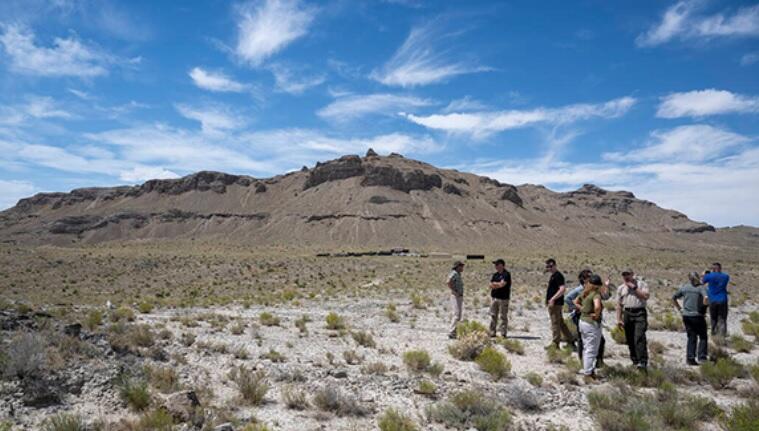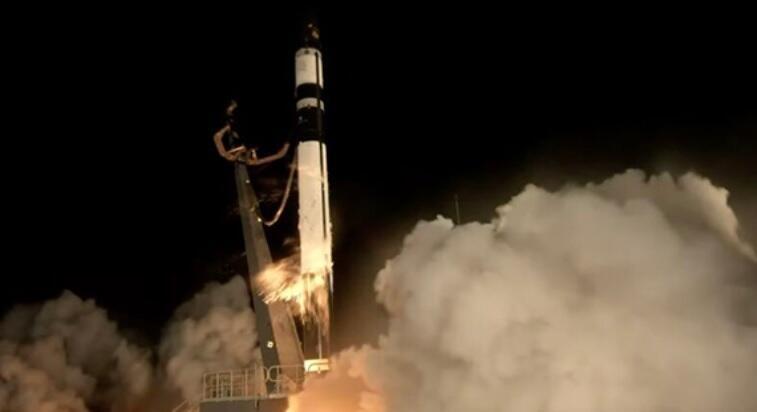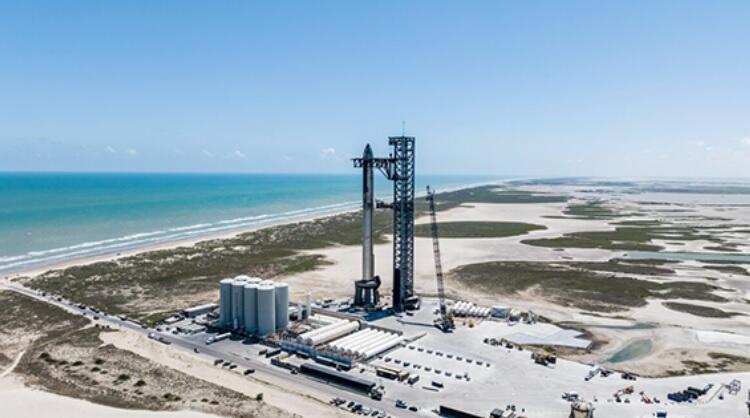After about seven years in space, intricate deep-space maneuvers, and traversing billions of kilometers, the first stage of the OSIRIS-Rex mission reached a successful conclusion on Sep 24, 2023. The spacecraft delivered to Earth a soil sample taken in October 2020 from the asteroid Bennu, found at a distance of over 330 million kilometers from our planet. The spacecraft itself did not enter the atmosphere and embarked on a new journey towards a new destination. Its upcoming mission entails a detailed investigation of the Apophis asteroid. It is anticipated to arrive there in 2029, about five and a half years from now.
Read more:
The spacecraft released the metal capsule containing the asteroid sample at a distance of about 100,000 kilometers from Earth. About four hours later, the capsule penetrated the atmosphere at a speed of about 45,000 kilometers per hour. Its heat shield was designed to maintain the low temperature at which the sample was collected. The landing design included a drogue parachute, intended to slow the capsule’s descent, and with the deployment of the main parachute, the capsule landed on the ground at a speed of only 17 km/h, within 13 minutes of entering the atmosphere.
The capsule was delivered to the surface of a military training area in the Utah desert in the U.S. Helicopter teams rushed to collect it and carry it to a nearby clean room facility, to minimize the risk of contaminating the sample. The sample was quickly unwrapped and disassembled for transport to NASA's Johnson Space Center research center in Houston. There, detailed documentation of its content will be made, and parts of it will be sent to research laboratories around the world.
What can the sample teach us? Likely formed at the dawn of our solar system, the Bennu asteroid may preserve clues regarding planetary compositions. Rich in carbon, it may harbor molecules that played a role in the evolution of life on Earth and potentially, elsewhere. Researchers believe it may also contain valuable metals, such as platinum. It is noteworthy that there is an exceedingly small probability, approximately four ten-thousandths of a percent, of Bennu impacting Earth by the end of the next century. Therefore, it is crucial to gain a thorough understanding of its composition and structure, just in case it may ever be necessary to alter its course.
The Long Journey to Earth – A short NASA video visualizing the journey of OSIRIS-Rex from the Bennu asteroid to its landing on Earth:
The sample collection from the asteroid was a complex operation necessitating autonomous execution by the spacecraft due to the vast distance from Earth. An asteroid with a diameter of about 500 meters has almost no gravity, making it almost impossible to land on. The brief window for sample collection demanded meticulous planning and precise execution, as the asteroid rotates around its axis and the sandy area from which the sample was taken is surrounded by large and dangerous rocks.
The contact was brief, lasting only a few seconds, and researchers had hoped that the spacecraft would manage to collect at least 60 grams of soil and rocks. In practice, the ground proved to be softer than expected, and the amount collected was much larger. So much so that the spacecraft's temporary storage system did not seal properly, resulting in the loss of some sample material to space. Consequently, NASA made the decision to promptly seal the remainder of the sample in the storage capsule, bypassing essential data collection, such as quantification of the amount of acquired material.
sample from Bennu is likely to be the largest ever brought to Earth from an asteroid or comet
NASA’s estimate suggests that the spacecraft eventually collected about 250 grams of material from the asteroid, although the margin of error is considerable, with potential fluctuations of up to a hundred grams either way.
The sample from Bennu is likely to be the largest ever brought to Earth from an asteroid or comet. Previous missions by Japan and the U.S. only managed to bring a few grams at most. It is also expected to be one of the largest samples brought by an unmanned space mission. If it turns out that the collected material surpasses the 170 grams of moon soil brought by Russia's Luna-24 spacecraft in 1976, it could rank second only to China's Chang'e 5, which brought 1.7 kilograms of moon soil in 2020.
Researchers hope that the seven-year mission which incurred a cost of approximately one billion dollars, will teach us not only about the chemical composition of our early solar system but also shed light on the origins of life.
"You think asteroids are pieces of junk out there that might hit us and we're very scared of them — whatever. You don't realize that actually, they're probably responsible for us being here," remarked physicist Brian May, also known as the guitarist of the rock band Queen, who was involved in the mission, particularly in image analysis for selecting the sampling site. "There would probably be no biosphere without asteroids. And possibly the actual seeds of life came from them as well — it's an incredible thought. So asteroids become absolutely the center of everything: If we understand asteroids, we'll understand ourselves,” he elaborated.
4 View gallery


Waiting for the moment of truth. Anticipating the retrieval of the sample return capsule from NASA's OSIRIS-REx mission, recovery teams surveyed the anticipated landing ellipse in the Utah desert
(Photo: NASA/Keegan Barber)
The Streak of Success Comes to an End
Last week marked a significant setback for Rocket Lab as one of their Electron rockets crashed during an attempt to launch a commercial satellite. The launch took place at Rocket Lab's space facility in New Zealand, with the first stage performing as expected. However, the second stage failed to activate, crashing into the Pacific Ocean with its payload – a satellite from Capella company.
This incident marked the fourth failure of the Electron rocket out of 41 launches since its introduction about six years ago, but it was the first failure after a string of twenty consecutive successful launches. The rocket is designed for launching small satellites and currently maintains a respectable 90% success rate, but it faces stiff competition from giants such as SpaceX. SpaceX's main workhorse, the Falcon 9 rocket, not only carries much larger payloads, including human missions but also holds a record streak of 230 successful launches.
With Rocket Lab's crash, the American/New Zealand company's stock also plummeted, recording a significant drop in the New York Stock Exchange. The company announced that it would freeze the next "Electron" launch, scheduled for later this month until it completes an investigation into the malfunction in collaboration with the U.S. Federal Aviation Administration.
4 View gallery


The start looked perfectly fine. The launch of the Electron rocket this week from Rocket Lab's space base in New Zealand
(Photo: Rocket Lab)
Will Starship Take to the Skies Again by The End of the Fall?
The U.S. Federal Aviation Administration (FAA) is expected to complete its report on the investigation of the malfunctions that occurred during the debut launch of Starship – SpaceX's massive spacecraft – by the end of October. The launch in April ended in an intentional explosion of the spacecraft after it failed to detach from its launch rocket, the Super Heavy. In addition to the damage caused by the mid-air explosion, the launch itself caused significant damage to the launch site as well as inflicted considerable damage to life and vegetation surrounding the company's launch site in South Texas, prompting an official investigation of the event.
FAA associate administrator for commercial space transportation, Kelvin Coleman, said last week that his office is working with SpaceX to rectify all the malfunctions and noted that of the 63 corrective actions listed in the mishap report, 27 are related to public safety. He estimated that by the end of October, his office would complete its review of the fixes made by the company. However, he emphasized that merely meeting the safety report's targets wouldn't suffice for SpaceX to renew Starship's launch license. They must also address the concerns outlined in the environmental report, which is being prepared in conjunction with the US Fish and Wildlife Service. Coleman expressed hope that the company would also receive this report soon.
4 View gallery


Ready for another launch. The Starship spacecraft on top of the Super Heavy rocket at SpaceX's launch base in Texas
(Photo: SpaceX)
Last month, SpaceX presented a comprehensive report listing their corrective actions and enhancements post-investigation to prevent a recurrence of such incidents in the future. Company owner, Elon Musk, promised earlier in the summer that it would be ready for another Starship launch by August, but as previously noted, that timeline went unmet
First published: 23:44, 09.28.23


